Faang, I learnt about this wild green during my visits to Jambughoda, a town in the tribal belt of Gujarat. Purvi briefed me the wild green our host had foraged to add to the Dal we were cooking. On our return the trip was discussed with a dear friend Kavita Chavda who then mentioned the Faangiya her mother makes. Faangiya are muthiya/Gujarati style steamed fist-cakes. Well, this discussion was almost 1.5 years back. It has taken me this long to document the recipe. The challenge was to find Faang needed for making Faangiya. According to Kavitaben, some 10-15 years ago the green was easy to find in Ahmedabad, but the decrease of green cover and open spaces has eliminated the possibility. I had to rely only on Purvi to help me find Faang, which she did from her own farm. The season was just right and there was fresh Faang available at her farm. The Gujarati shabdkosh/dictionary has two similar words – Faand and Faang, while Faang is a creeper Faand is a bush. help us understand what Faang is I requested Purvi to share some basic information about it…
Purvi Vyas, an organic farmer and academic shares…
Wild edibles continue to be a significant contributor to the global food basket in much of the developing world. Information on wild edibles is an important part of ethnobotanical knowledge of local communities.
Faang is a wild edible creeper that is a part of the living fence that most farms had in the past before the barbed wire fence took over. Faang grows well in a symbiotic relationship with other wild plants. It’s does not grow well on its own nor is it easy to transplant. The creeper is extremely nutritious green that was common part of everyone’s diet and usually was abundantly available post monsoon. The seeds make interesting play material for children. The seeds are in form of ball. When blown on by kids they spray and scatter in the air like fairy dust.
In the past farmers used to forage the living fences for wild edibles for themselves and their animals. The living fence was like a food security net in lean times when things didn’t grow well. As a result of increased use of pesticides, weedicide and the disappearance of living fences from our farms today this creeper is becoming difficult to find.”
It is mentioned Faang helped numerous family sustain during the great famine called ‘chappaniya dukal.’ Faang was a common wild green in the rural landscape. The entire creeper including leaves, stem and roots are consumed and
- It’s extremely fragrant flowers are used to calm anxious mind.
- A kadha is made with the roots and stems and given to cattle to help it drop the umbilical cord and placenta afterbirth.
- The leaves are warmed, some castor oil is smeared over it and applied oner inflamed joints.
- A paste of crushed roots and stems is applied over snake and scorpion bites.
- The leaves drenched in ghee were applied over boils. It induced it to burst and heal rapidly.
- It is rich in iron.
- It prevents cough, pitta, chest infections.
I plan to cook some more foods with Faang whenever possible. Until then I hope you get to source Faang and make Faangiya. Pakora, Thepla, Dal, Shaak is how Faang is enjoyed.
This journey is getting better with each day, as more and more people open the hearts and kitchens for me to capture the lesser known foods…… Maya auntie and Kavitaben thank you so much for Faangiya and all the fun we had making it.
❤️
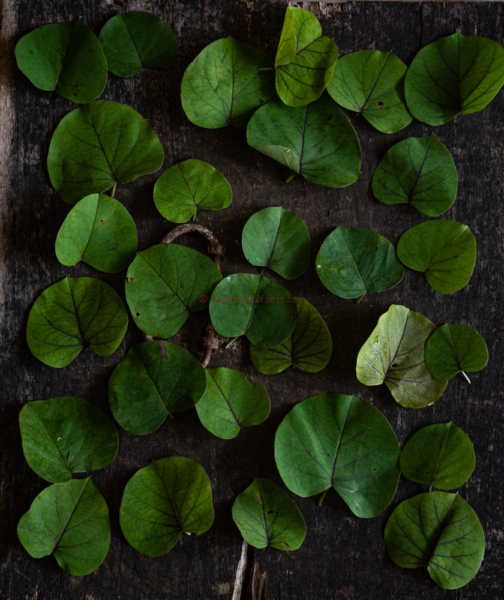
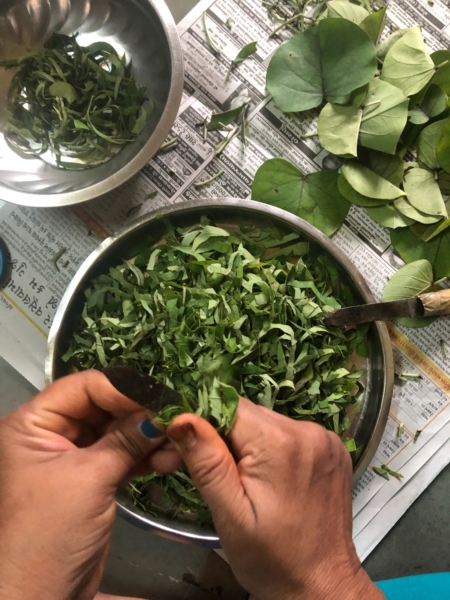
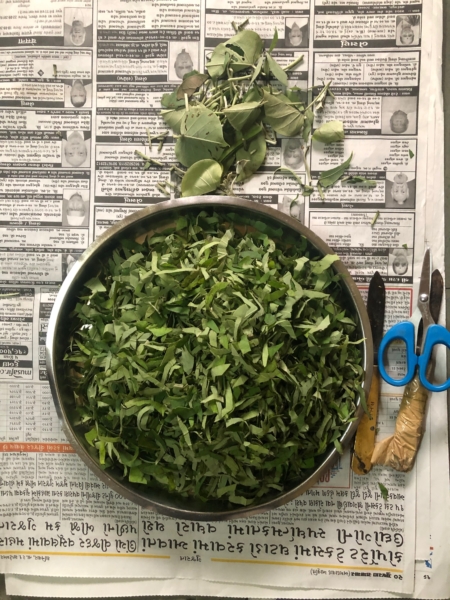
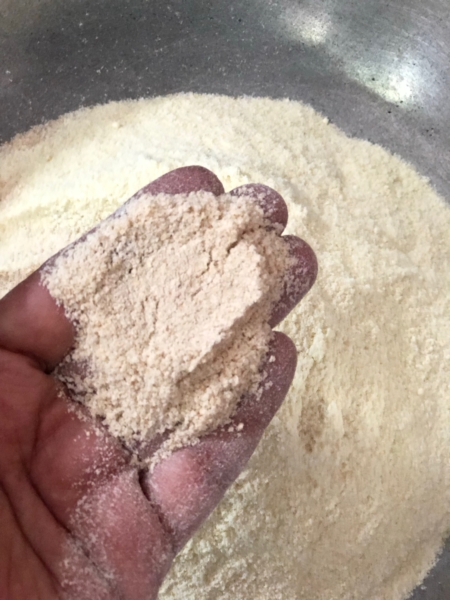
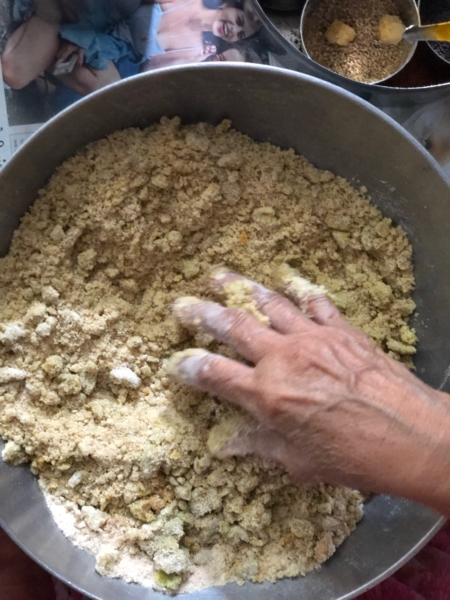
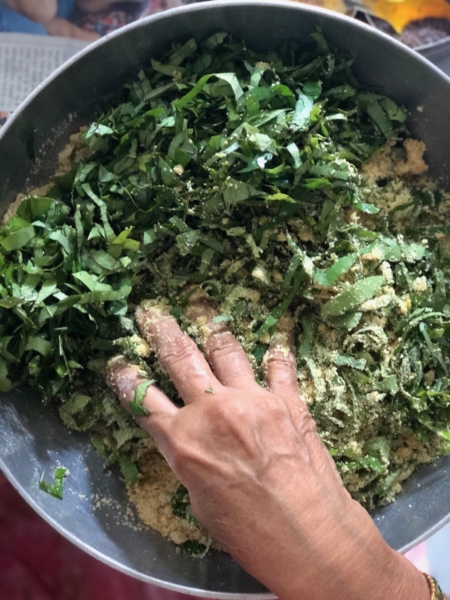
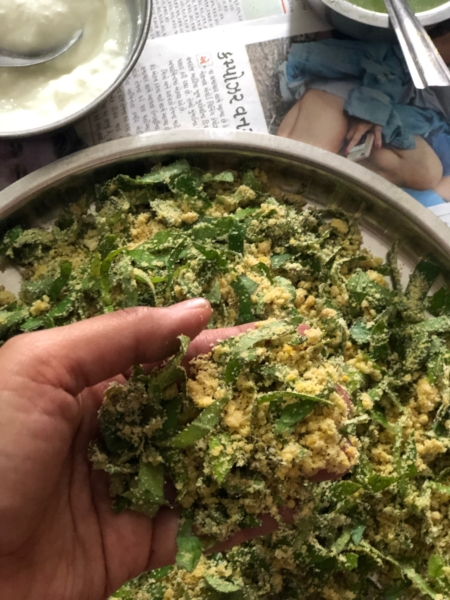
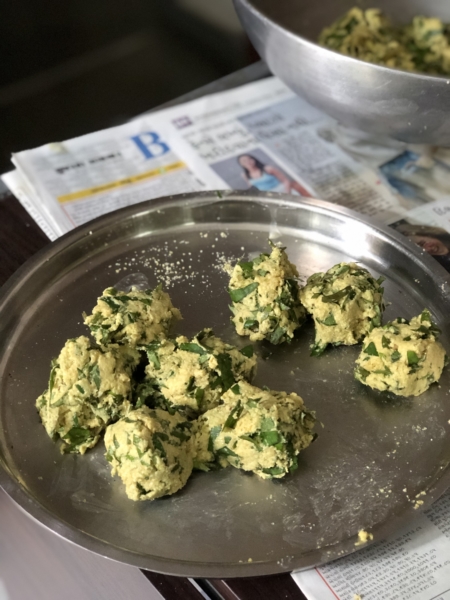
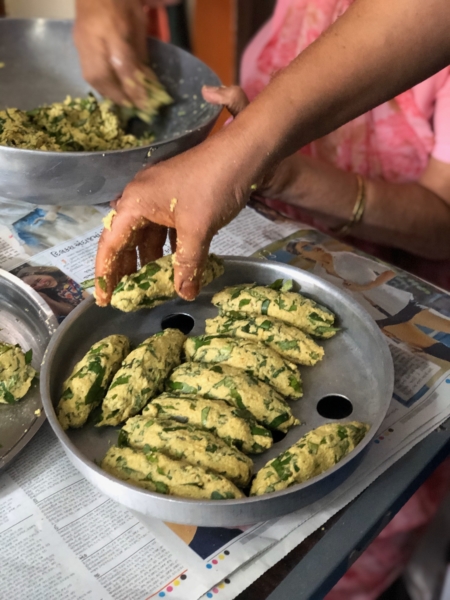
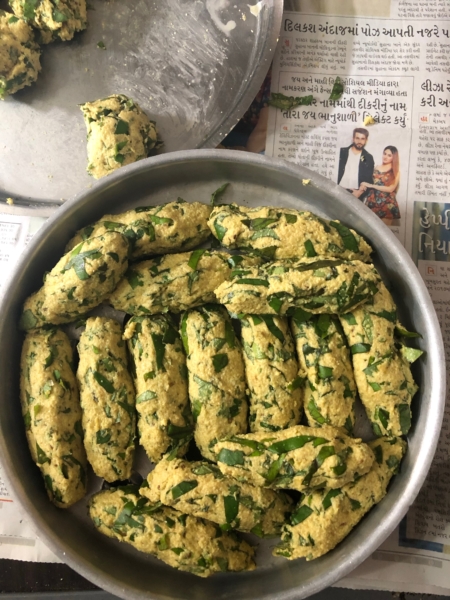
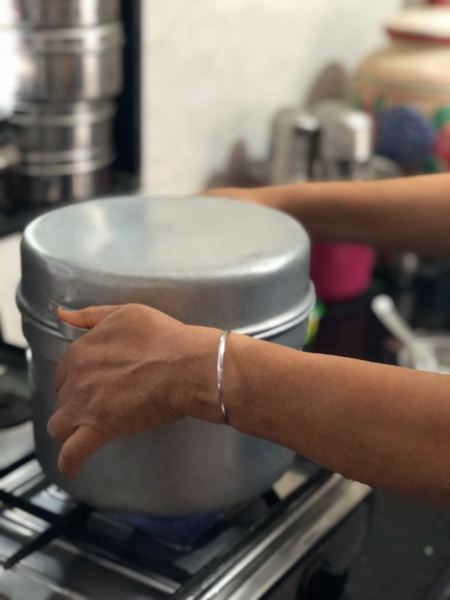
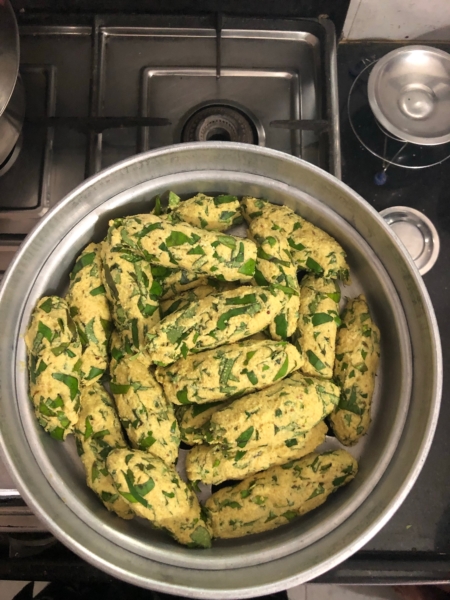
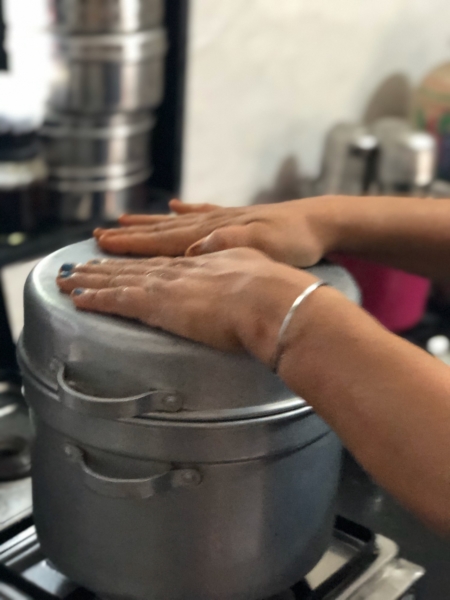
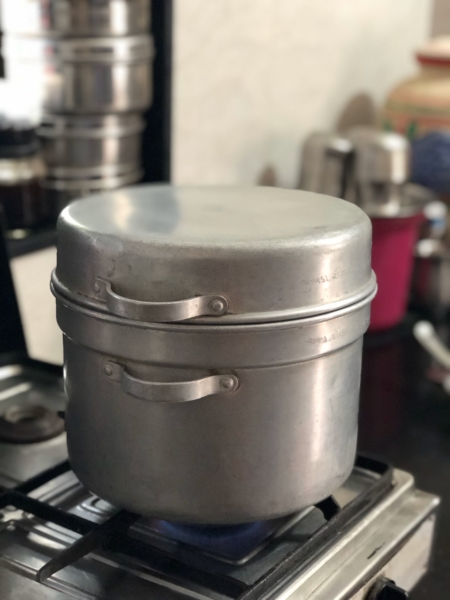
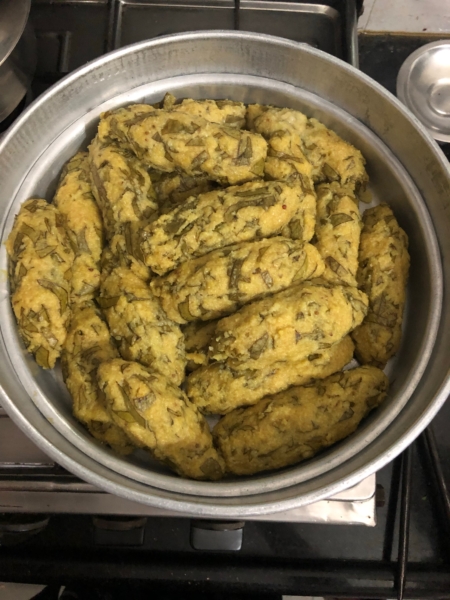


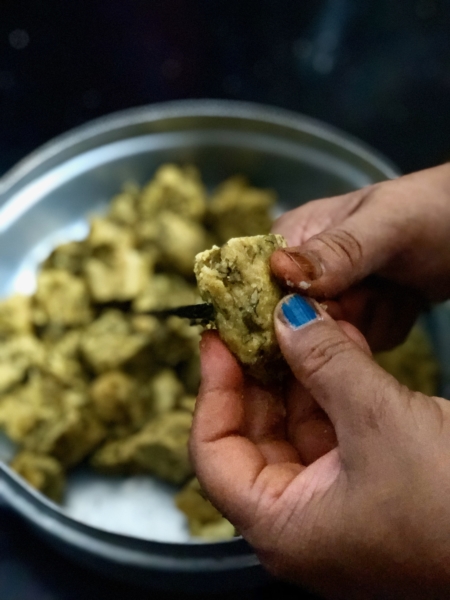
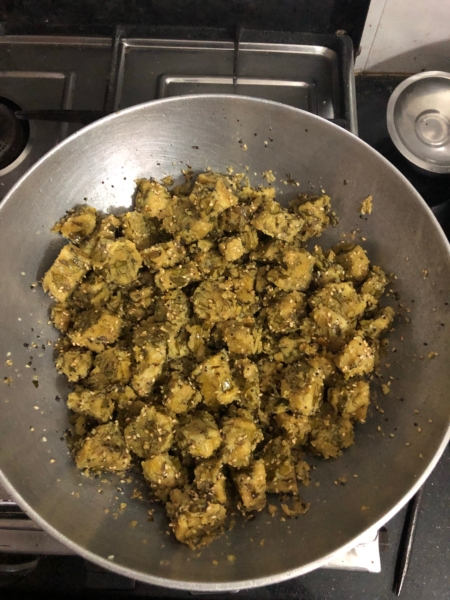
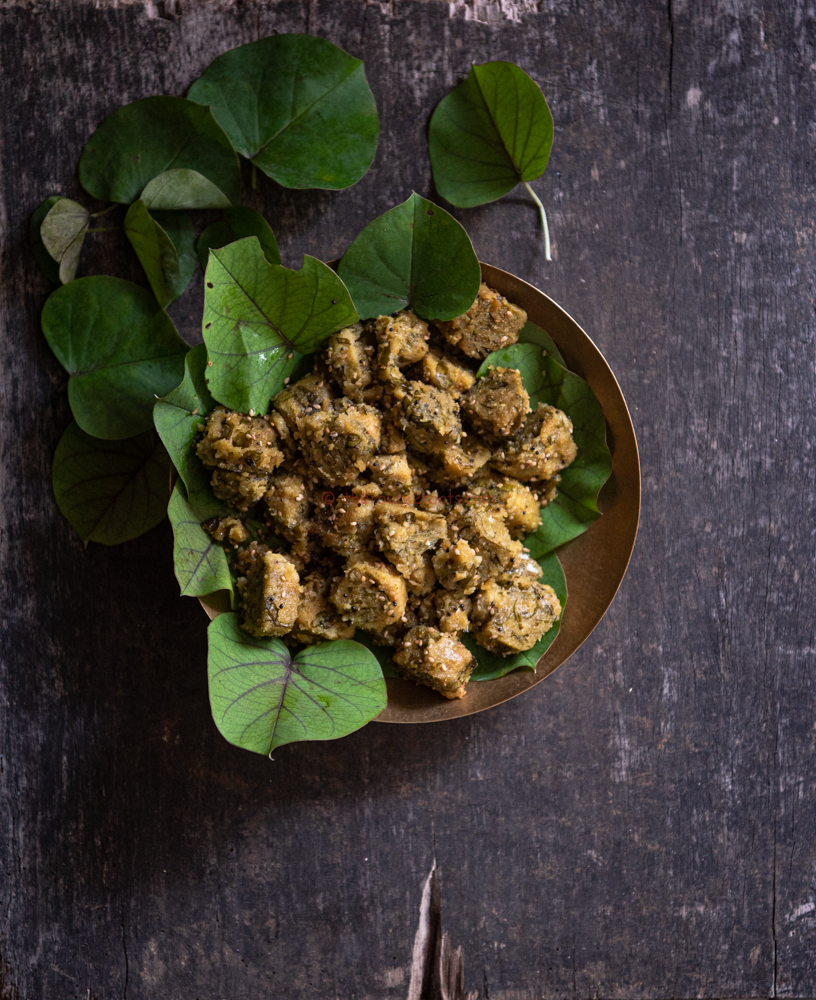
Faangiya - the wild-green muthiya
Ingredients
- 2.5 cups whole wheat flour, coarse ground
- 1 cup dhokla/handva flour
- 4 cups chopped fang
- 10 cloves garlic, paste
- 2 inch piece of ginger, paste
- 7-8 green chillies, paste - reduce to sun your taste
- 2-3 teaspoons sugar
- 1/2 teaspoon turmeric powder
- 1 teaspoon ajwain/carom seeds
- 3 teaspoon coriander -cumin seeds powder
- 4-5 tablespoons oil/moyan
- sour yogurt to bind the dough
- salt to taste
- To Temper
- 5 tablespoons oil
- 2 teaspoons mustard seeds/rai
- 1 teaspoon red chilli powder/mirchi powder
- 4 teaspoons sesame seeds / til
- a pinch of hing/ asafoetida
Instructions
Wash and cut the faang leaves in ribbons.
In a large mixing bowl mix the flours, green chillies, ginger, garlic, sugar, ajwain seeds, turmeric powder, coriander and cumin seeds powder, salt, oil and enough yogurt to bind very soft sticky dough.
Shape them as muthiya and steam for a good 45 minutes to 1 hour on high flame.
To check the doneness of the fangiya, they are done if a knife inserted in it comes out clean.
Cool the Faangiya well.
To temper, slice the fangiya in roundels.
In a large Karahi, heat the oil, add the mustard seeds, sesame seeds, hing. Once the seeds splutter add the sliced faangiya.
Cook them for few minutes until the faangiya have been coated well and developed a light brown crust.
Enjoy with a hot cup of chai.
Notes
Ensure that the steamer has enough water as the Faangiya will cook for close to an hour. Yogurt should be a little sour.


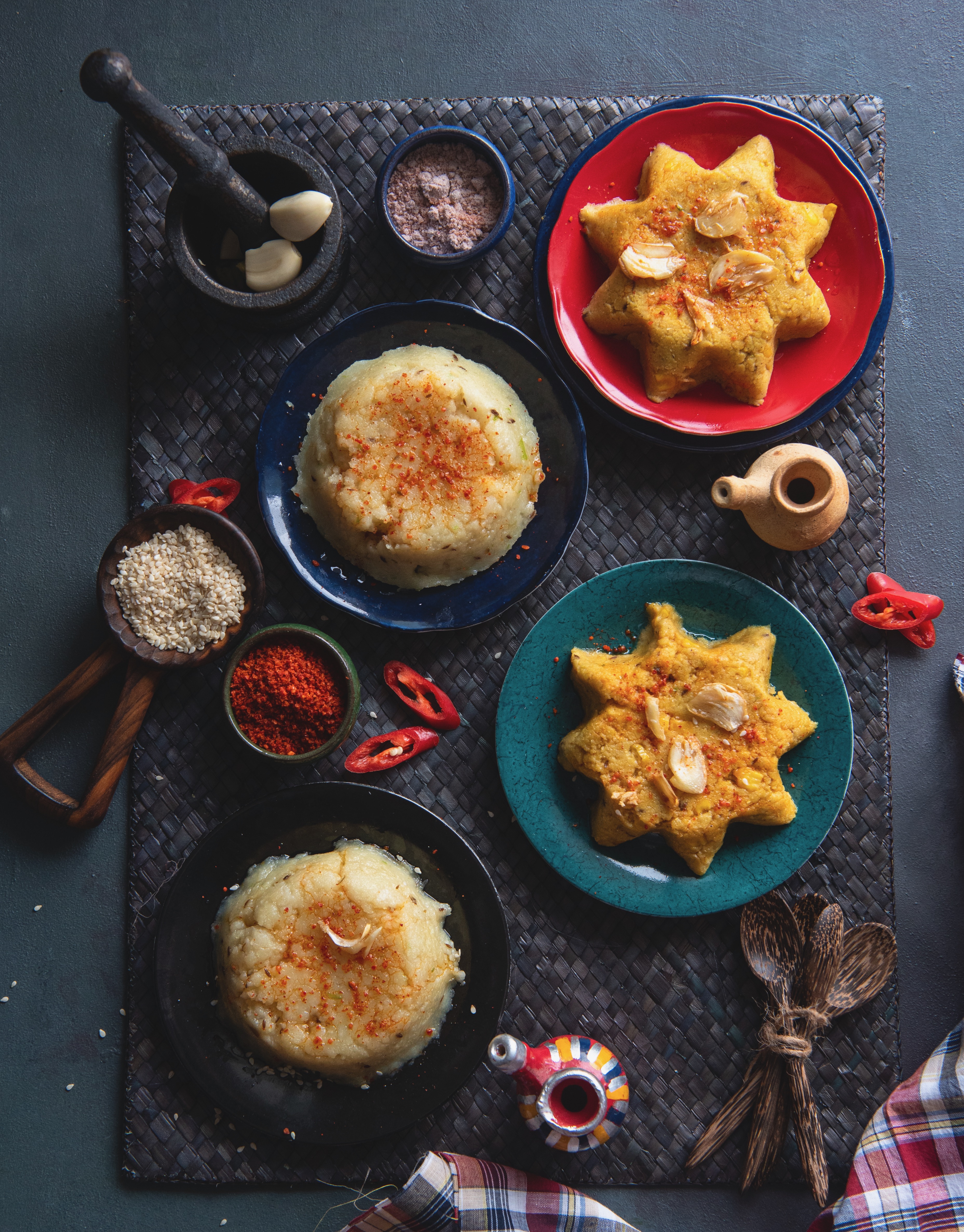
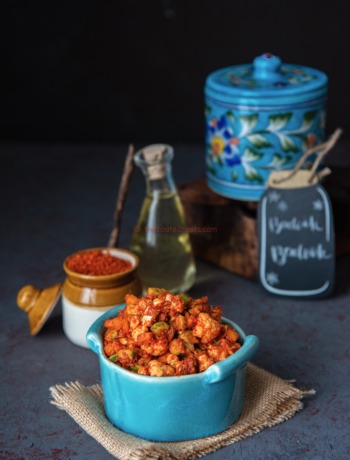
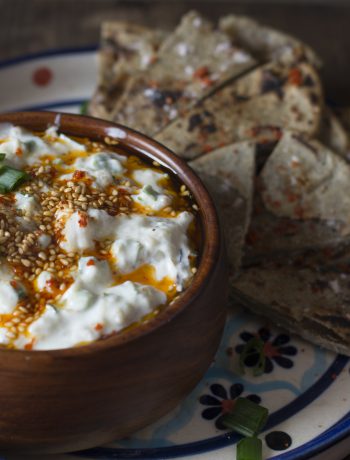
No Comments